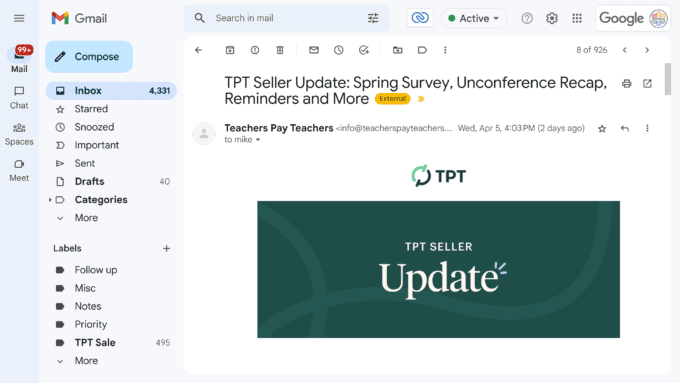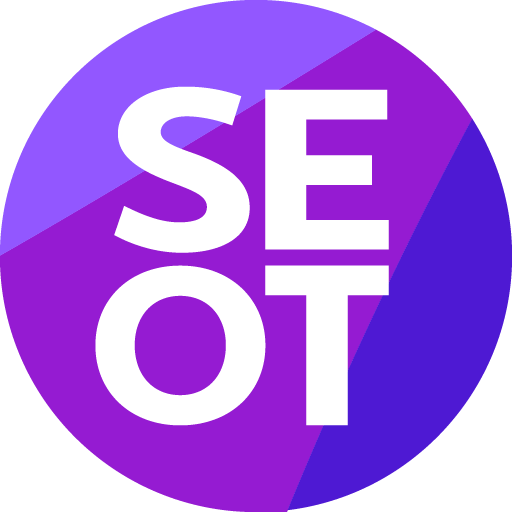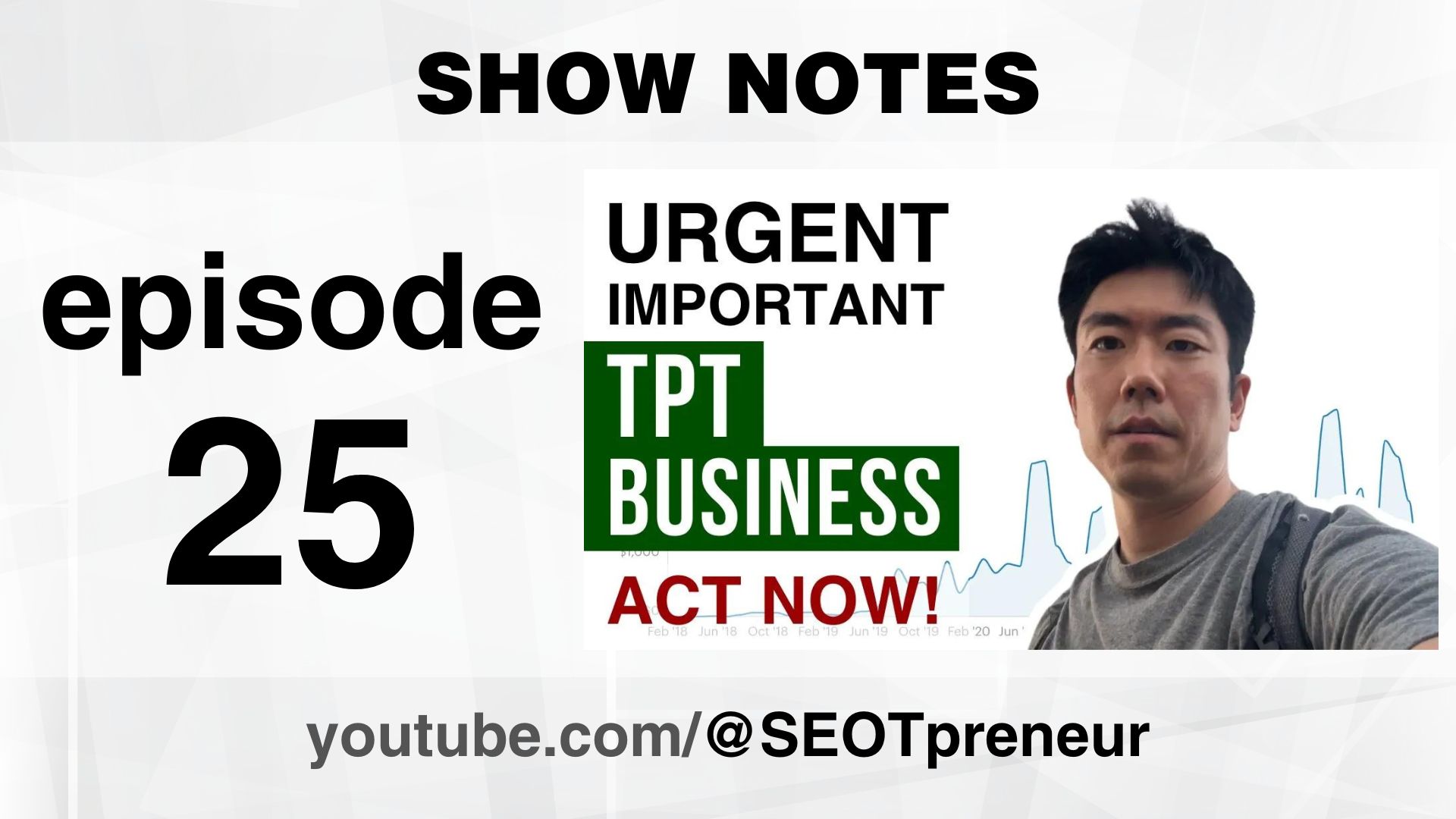Urgent and Important TPT Business Action that every TPT Seller should do right now – Episode 25
Want to know the most important thing you can do for your TPT business right now?
It’s free
You only have a few days to do it
And it’s not what you think… but it really matters!
Watch the video
When most TPT sellers are trying to improve earnings, they focus on technical things: TPT SEO, keywords, product PDFs.
Right now, TPT is giving us an opportunity for TPT sellers to be heard.
Where to find the link to the TPT Seller Spring Survey
Check your email for a link to a TPT survey.
- It’s called TPT Seller Update: Spring Survey, Unconference Recap, Reminders and More.
- It might be in your Promotions Tab (if you use gmail) or in your junk mail.
- The email was sent on Wed Apr 5 around 4:00 PM (ET)
- The survey closes at Noon ET on Monday, April 10th.
It looks like this:

Why is this TPT Spring Survey so important?
It’s the first survey since IXL acquired TPT. They’re trying to get a sense of what TPT does well and where it can improve.
Yes, they can get a sense of sentiment from their TPT forums, Facebook groups, or TikTok accounts.
But most online groups become echo chambers. It’s easy to be disgruntled and have your voice amplified.
But do grumpy TPT sellers who voice their concerns loudly in TPT forums and TPT email support channels accurately represent TPT sellers as a whole?
I have no idea.
That’s why filling out surveys like these are important.
Your voice helps give TPT and IXL a more balanced picture of the marketplace.
Why?
Because each seller filling out the TPT store has to identify their name and store. So one seller, one survey. (Yes, I know. Some sellers have multiple stores, but you get the idea)
On the other hand, in the an online forum, sometimes active people can write lots of posts and perception of sentiment can become skewed.
Now is the time for TPT sellers to let TPT know what they’re doing well, and where they need to improve.
If you had a magic wand, what could TPT do that would help your TPT business?
Of course, there’s no guarantee that any suggestion will be heard or implemented.
But I’m a firm believer in active citizenship. If you have the power to stand up and the mental health points to do so, then we can help shape the communities we belong to.
Go look for that email from TPT with the survey link. I believe it’s only open for a few days!
Choose to exercise your voice – even if you think you have nothing to say. Because it shows proportionately how large different concerns are.
See you in the next comment!
Also, if you’re curious to see what I wrote, read on:
Here are my answers to the TPT Seller Spring Survey. This is an open letter.
Formatting and hyperlink titles have been modified from the original response in the Google form.
Q1 Please share what TPT does well.
Making data based decisions.
Trying not to be tone deaf by listening to TPT seller concerns.
Actively engaging with TPT sellers. (Although I don’t agree with TPT Joe’s decision to do a 180 regarding January’s virus scare: https://seotpreneur.com/teacherpreneur-courses/free-tpt-business-course-hero/lessons/tpt-virus-threats-virus-total/ )
Love your efforts to try to reduce racism on the platform.
Q2. Please share a few examples or projects that demonstrate what TPT does well.
I like the new direction with Karen’s Q&A in the newsletter. Much more relatable than former TPT CEO Joe.
Optimizing the TPT search algorithm with personalization to improve sales and conversion rates in the platform.
Sending out TPT seller surveys like this to try to get the pulse of the TPT seller community instead of solely relying on sentiment in the TPT forums or Facebook groups
I like how your system flags certain keywords to have the pop up warning about appropriate content.
I love how your Easel by TPT certification course included an emphasis on inclusion and accurate cultural representation.
I like how you’re having a virtual seller meet up for sellers of colour.
I like how you had a grant for teachers to create more inclusive resources
Q3: Please share how TPT could improve your experience as a Seller.
I need more reliable sales metrics from TPT.
Your traffic dashboard is broken.
The current GA3 version filters out traffic in undisclosed ways. So not all TPT UTM links are captured properly. Then the TPT system attributes the sale to TPT and not the UTM parameters so it becomes unreliable to know which of our marketing campaigns are working. Here’s an example: UTM Links Part 3
Here’s another example around 7:28. I have a free product with 42k downloads. It has a UTM link in the PDF download that has generated a few dollars. Sometimes, if it’s too good to believe, there’s something fishy going on. But if it’s too bad to believe, there’s something fishy going on as well. I think some of my UTM clicks here have been incorrectly aggregated under the catch-all TPT source: Is this Product Typical – Episode 23 at 7:28
I have a third example, but it’s not on YouTube yet.
I use a spreadsheet to record when people click on a link from my website to go to my TPT products and when people buy products from my store. Here’s a video showing the spreadsheet. Free TPT 80/20 Data Analysis Tool – at 17:05
I have an example of a day where someone clicked my link on my website with UTM parameters. And then a few minutes later, that product was purchased from TPT but not attributed to my UTM parameters. (I have the day in question and was going to ask TPT support to look in your GA account to see if the sale was there. I think there’s a glitch in pulling data down from Google Analytics into your stack.)
TPT has told us that historic data glitches in the TPT dashboards are not corrected, so it’s hard to know at what point the TPT dashboard becomes trustable because a glitch is fixed. Episode 23 at 11:40
Your TPT ad metrics dashboard are also incorrect and make it impossible to calculate accurate return on investment.
Right now, the TPT ad system doesn’t correctly track or report which product sales are a result of which TPT ad.
I buy TPT ads for my Reading bundle. (The first come first serve system isn’t ideal for you – to optimize relevant ads showing to clients on the platform or to me trying to buy ads that day – but it’s easier for teachers to understand vs the traditional PPC model so I can accept it.)
However If I run an ad in ELA and on 9th grade on the same day, your ad metrics page incorrectly shows total product sales to both the ELA and 9th grade spend. See TPT support ticket 1486862
Further more, I’ve discovered if I purchase my reading bundle directly on a day that I’m running an ad for that bundle, your ad system will incorrectly attribute my purchase as a result of an ad click. This is misleading.
In order for me to know which marketing efforts are working, I need to trust TPT UTM data. Otherwise I’m just hoping.
Can I ask Team TPT to consider the following inequity.
Search engine algorithms can learn bias from humans.
The Google search algorithm can provide sexist answers.
When asked who scored the most goals in international football, the algorithm has learned human bias and incorrectly answers with Cristiano Ronaldo, a male statistic when the correct answer is Christine Sinclair, a female statistic.
This is sexist because it provides misinformation that favours one group of people (men) over another (woman)
See: https://www.correcttheinternet.com/
(I actually have a very cool ChatGPT critical thinking lesson that will be published in the next few days. It’s really good and explores this issue and critical thinking.)
Given that we know search algorithms can learn human bias and discriminate against groups of people, I believe there is reason to believe the TPT search algorithm can discriminate based on country of origin.
TPT publishes the location of the TPT seller’s store in a prominent place and this information can influence sales of TPT sellers from certain countries.
Everyone has unconscious bias; some people are more xenophobic than others. They may hesitate to purchase a resource if it’s not from their country or a familiar country.
Regardless of whether your search algorithm is coded to consider geolocation and proximity in your personalized results, the reality is some people will be afraid to buy resources from some countries.
There are preconceived notions about the quality of English, quality of work, etc.
This xenophobia can result in reduced sales and reduced product views which is a major search ranking factor.
Consider the following scenario:
A TPT seller moves to a “foreign” country. The products haven’t changed at all but because TPT lists store location, this can bias xenophobic people from buying the resource. This will likely have a snowball effect in the TPT search algorithm and the TPT seller will lose income because they moved.
Certainly there’s benefit to knowing where a resource comes from.
Knowing that I’m from Canada can help buyers know I’m going to spell words differently and refer to Grade 8 instead of 8th grade. There can also be cultural norms there are region specific.
In a true meritocracy, my product previews and description should be enough to help teachers make an informed decision when buying from my store.
And of course teachers can leave a poor review and help other teacher buyers.
But I have to wonder, if I moved to Pakistan and nothing else changed, would my sales on Educircles drop?
Ultimately IXL has the opportunity here to be a leader in equity and inclusion.
Team TPT has started a great journey towards inclusion by actively working towards amplifying voices of Black people and other groups.
Will IXL continue the journey?
Is TPT predominantly an American marketplace catering to American buyers?
Or is TPT to become a true global marketplace based on quality of educational resource and not a person’s country of origin / residence?
Thank you for your consideration!
Please share a few examples or projects that demonstrate how TPT could improve your experience as a Seller.
1. More granular data about the buyer journey that leads to sales of a specific product.
For example if I knew which categories led to sales, I could make data informed decisions about what to categorize my products as.
The limit of 3 categories is fine but I have no idea if my product is selling well because it says communication, or new year, or ELA or another category altogether.
If I could chose the correct category for my product that increased sales both you and I would benefit from more sales.
2. A way for the dashboards to show us conversion rate data for specific time periods.
The CSV download is for lifetime product stats.
So being able to compare conversion rate for a given TPT product for time period A vs time period B would help us test and optimize content to increase sales. For example does product cover A or B lead to more sales.
Being able to determine the true conversion rate of a product between custom dates is key for me to know if a certain cover or change on my part led to improved sales.
3. Event logging or more granular control over what VAs can.
Right now a VA can do anything in your account. That’s too much power with zero accountability.
An event log would let me see which products were changed. Reversion control to undo changes would be nice.
4. API access to automate downloading of CSV data or to edit products would be wonderful.
Sometimes I make seasonal changes to my product titles. Being able to automate through third party code via API would allow more sophisticated seller tools that you don’t have time to build.
For example, YouTube’s API model allows a third party company like TubeBuddy to automate A/B cover testing to help YouTubers like myself learn what types of covers resonate best with my customers. The API allows the third party software to upload cover A on one day and cover B on the next day at midnight. After two weeks, the third party software calculates which cover had a better conversion rate. By alternating days and running for at least two weeks, it corrects for daily or weekly anomalies.
5. I wish your video product type was taken more seriously by your product dev team. I’ve tried it. I seem to recall updated video products not showing up properly in the “new products by sellers you follow” feed.
It would be more useful if you could jump to time stamps like with YouTube. This would allow chapters in a table of contents PDF.
Is there anything else you’d like to share with the team at this time? (Optional)
Love TPT and Team TPT for all that you do. It’s not easy. I appreciate what you do.
Have fun with the transition.
Cheers, Mike Fuchigami
Educircles
PS: this will be published as an open letter on seotpreneur.com/episode25

